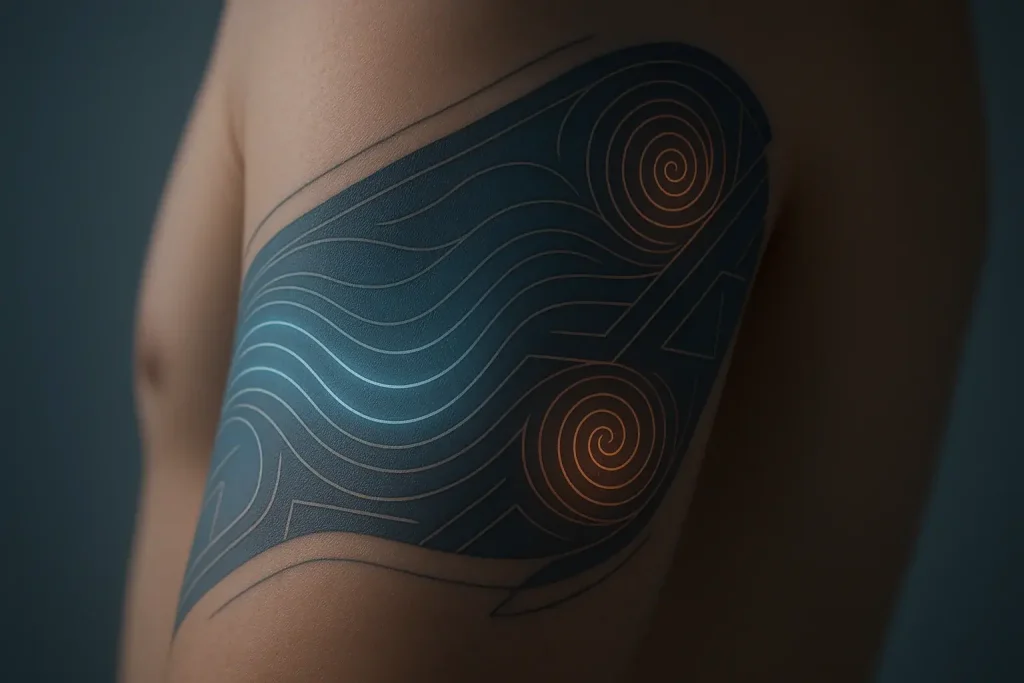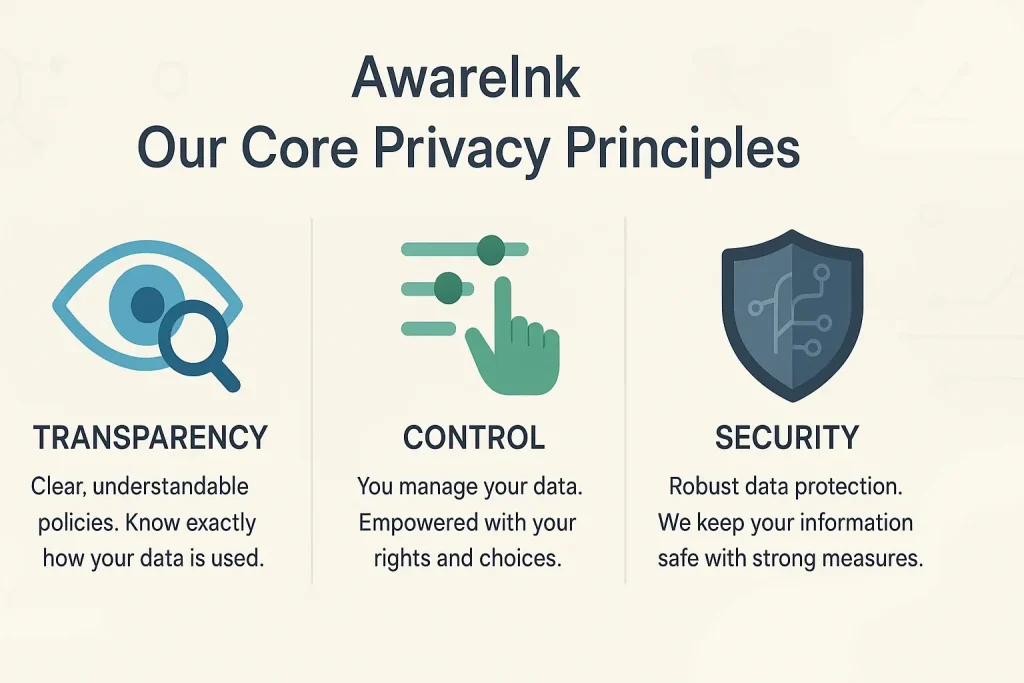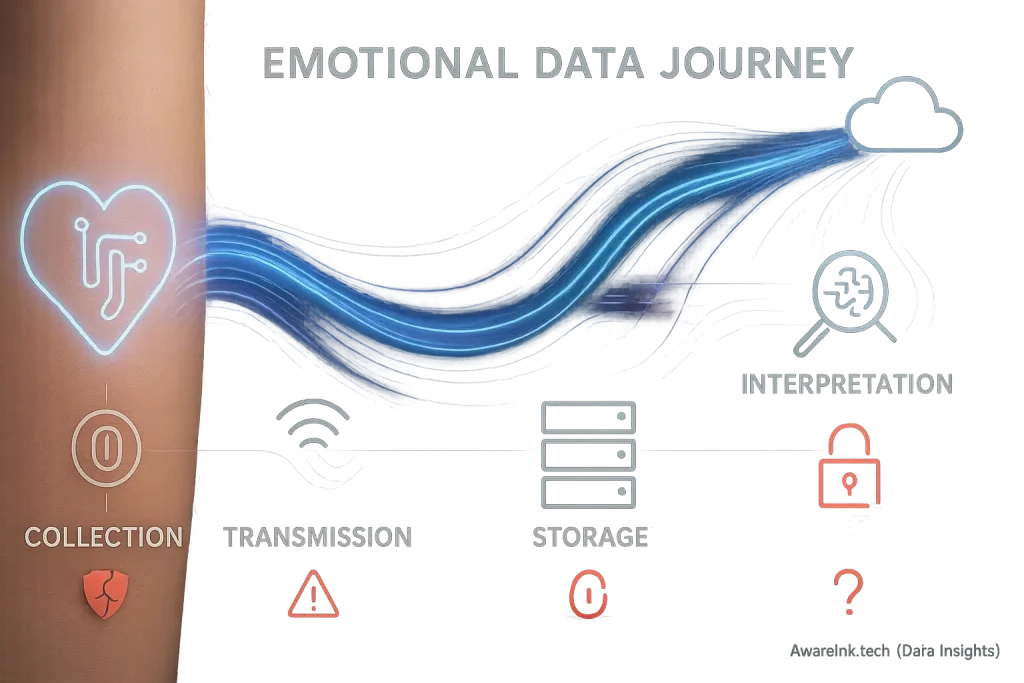Emotions Made Visible: The Magic of Smart Tattoo Displays
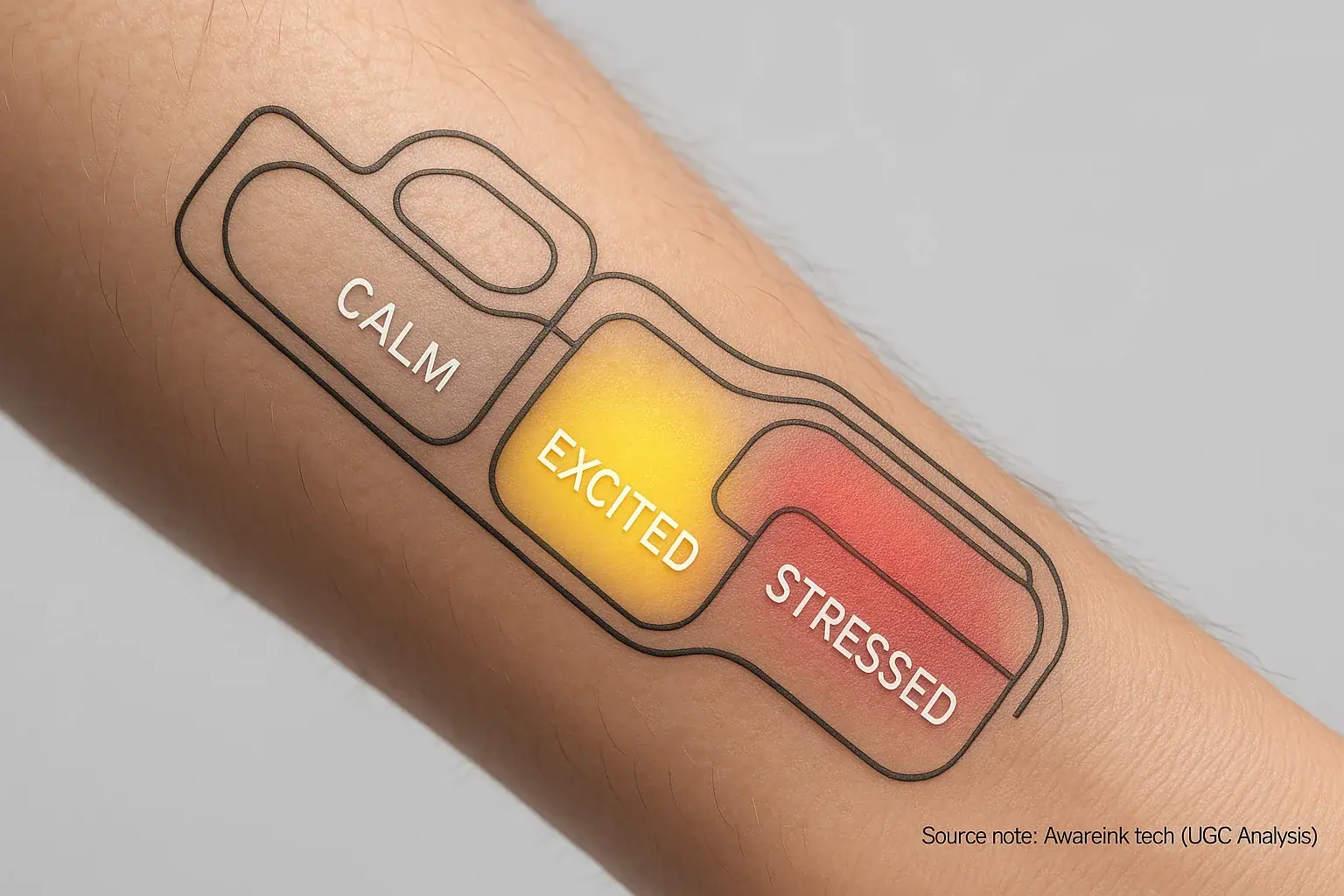
Ever wished your inner world had a 'display' button? Mood-adaptive smart tattoos aim for this transformation. These devices translate invisible biosignals. They create visible patterns on your skin.
This visual feedback can deepen self-awareness. Imagine a subtle hue shift. It appears on your tattoo. It signals rising tension. You might notice before conscious feeling. AwareInk.tech's analysis suggests users anticipate this direct insight for powerful personal understanding.
How do these tattoos show emotion? Different display technologies are at play. Each creates unique visual languages on your skin. Some might glow vibrantly. Others could shift texture subtly. Exploring these options reveals new possibilities for expression.
E-Ink & Beyond: The Low-Power Canvas for Your Mood
E-Ink displays employ tiny microcapsules. These capsules hold charged pigment particles. An electric field then rearranges these particles. This process creates visible text and images on thin, flexible surfaces. The result? A paper-like visual. Imagine reading your mood as easily as a newspaper, even in bright sunlight. This quality makes E-Ink excellent for glanceable, body-conforming smart tattoo information.
E-Ink technology offers exceptional power efficiency. Displays consume energy primarily during image changes; static images require almost no power. This enables always-on mood displays, with users often reporting weeks of battery life. Sunlight readability is a strong advantage, as E-Ink screens mimic paper's high contrast.
E-Ink displays present certain trade-offs. Refresh rates are slower than LCD or OLED. This slower refresh can affect dynamic content. Frequent updates may also introduce faint image remnants, or ghosting. Rapid emotional shifts might not render instantly without visual artifacts. Color representation is another consideration. Standard E-Ink offers limited color palettes, impacting mood visualization vibrancy and favoring subtle, gradual updates.
MicroLEDs: The Future of Vibrant, Dynamic Mood Visuals?
MicroLED technology appears as the next frontier for smart tattoo displays. It promises truly vibrant visuals. Imagine your mood tattoo bursting with color. It shifts with every subtle emotional wave – that is the MicroLED dream. These advanced displays offer intense brightness. Their full-color spectrum could make emotional expression incredibly rich. This technology is a beacon for dynamic skin interfaces.
MicroLEDs possess superior visual characteristics. Their brightness and contrast far exceed many current display technologies. A vast color gamut enables nuanced, vivid mood representation. This capability allows for truly dynamic, high-resolution patterns on skin. Your tattoo could become a living canvas. It mirrors your emotional state with artistic flair. AwareInk.tech's analysis suggests this transforms self-expression from static symbols to fluid, visual narratives.
Significant hurdles remain for widespread adoption. Miniaturization presents a complex engineering task. Placing millions of microscopic LEDs onto ultra-thin, flexible substrates is difficult. Power consumption also poses a major challenge. While the visuals are stunning, engineers are still wrestling with how to make these power-hungry displays last all day on your skin without needing constant charging. Improving microLED efficiency and optimizing driving schemes are critical research areas. Despite these obstacles, the transformative potential of MicroLEDs for vibrant, dynamic mood visuals remains exceptionally high.
Beyond Pixels: Thermochromic & Electrochromic Inks
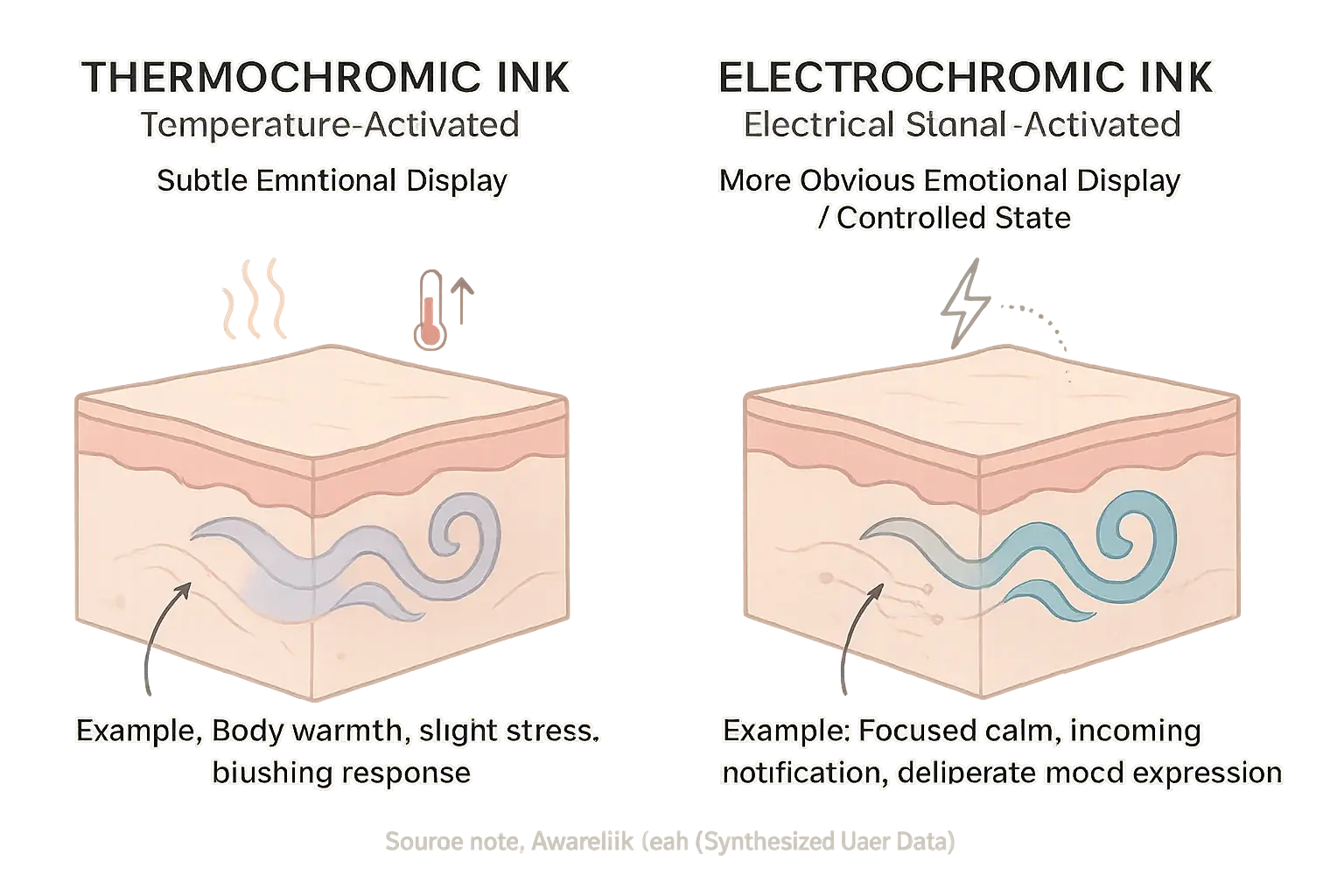
Mood-adaptive smart tattoos explore displays beyond conventional pixels. Thermochromic inks offer one such alternative. These materials change color with body temperature fluctuations. Electrochromic inks similarly alter appearance via minute electrical currents. The tattoo's material itself shifts hue. A truly organic response.
These color-changing materials promise a distinct aesthetic. Their visual effect appears more subtle, more 'alive' on the skin. Certain users might prefer these gentle, watercolor-like shifts to sharp digital displays. AwareInk.tech's analysis indicates this integration feels more natural for specific wearers.
Practical limitations, however, temper current excitement. Many thermochromic and electrochromic inks exhibit a restricted color palette. Response speeds can lag behind pixel-based displays. Durability remains a considerable question for long-term skin integration. The central challenge: balancing organic subtlety with reliably clear emotional communication.
What's Your Ideal Mood Display? Use Our Interactive Checklist
What's Your Ideal Mood Display?
That checklist was not merely an exercise. It is a powerful way to pinpoint what truly matters to you in a mood tattoo display. AwareInk’s analysis shows understanding personal priorities, like discretion versus vibrancy, is fundamental. This clarity ensures future satisfaction.
The 'best' display is not just about the flashiest technology. AwareInk's research confirms the ideal choice genuinely serves your unique emotional journey and lifestyle. This means finding a display perfectly suited to you. Your personal needs guide this decision.
The Balancing Act: Subtlety vs. Clarity in Mood Displays
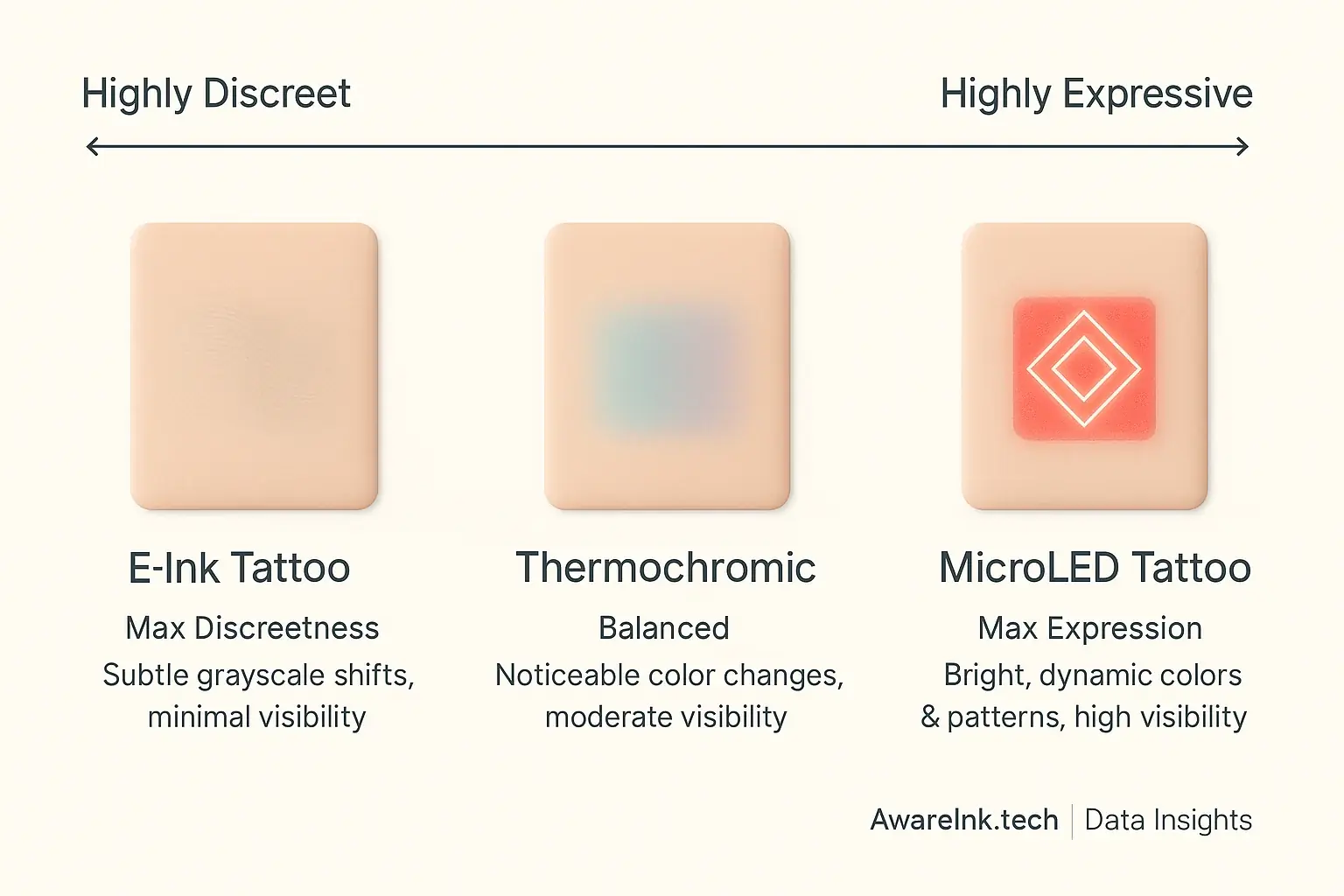
Smart tattoo displays present a core challenge. They must balance subtle visuals with clear emotional cues. It's a tightrope walk. Making your internal state visible enough for personal use is crucial. Yet, it cannot become an unwelcome public billboard. AwareInk.tech's analysis indicates users desire discreet personal insight. Simultaneously, they seek actionable feedback from their device. This fundamental tension shapes the entire display selection process.
The real puzzle? Social perception. A visible mood display profoundly impacts daily interactions. AwareInk.tech's investigation into potential user scenarios clearly illustrates this. Imagine a tense negotiation. Your tattoo suddenly flares bright crimson. Is that a helpful personal cue, or an incredibly awkward public reveal? Users will wrestle with how much of their inner world they truly want 'on display' for everyone else. Different display technologies inherently lean towards greater privacy or more obvious openness, influencing power consumption and aesthetic subtlety.
So, what display truly serves your needs? Consider your typical social environments very carefully. A highly discreet display often suits private individuals best. It offers personal reflection without constantly broadcasting feelings to onlookers. Others might prefer, or even require, clearer visual cues for specific mindfulness practices or biofeedback training. AwareInk.tech's findings emphasize a key point: no single 'best' balance exists for everyone. The optimal choice remains deeply personal, hinging on individual comfort with visibility and the intended use of the mood-adaptive tattoo.
What's Next for Emotional Displays? Future Trends in Smart Tattoo Tech
Current smart tattoo displays represent an initial step. Greater advancements loom. Imagine your skin transforming into the display medium. This technology could integrate perfectly with your natural aesthetic. AwareInk.tech's analysis indicates self-healing materials will extend display longevity . Future iterations point towards consuming substantially less power . Designs will become thinner. And more adaptable.
Advanced capabilities will reshape personal emotional expression. AwareInk.tech's analysis of emerging user feedback patterns suggests dynamic visual responses could offer richer personal expression. Picture a tattoo. Its design subtly shifts. Not merely color. The display becomes living art. Your inner state guides this transformation. Augmented reality integration presents another compelling frontier . This could overlay digital information onto your real-world view.
The technological progression is thrilling. Undeniably. Yet, AwareInk.tech's synthesis of emerging trends highlights a profound societal question. How will communities navigate pervasive, visible emotional information? Privacy discussions will become more critical. Authenticity debates will sharpen. These ethical considerations must advance with the technology. Truly unobtrusive displays necessitate deep societal reflection.

